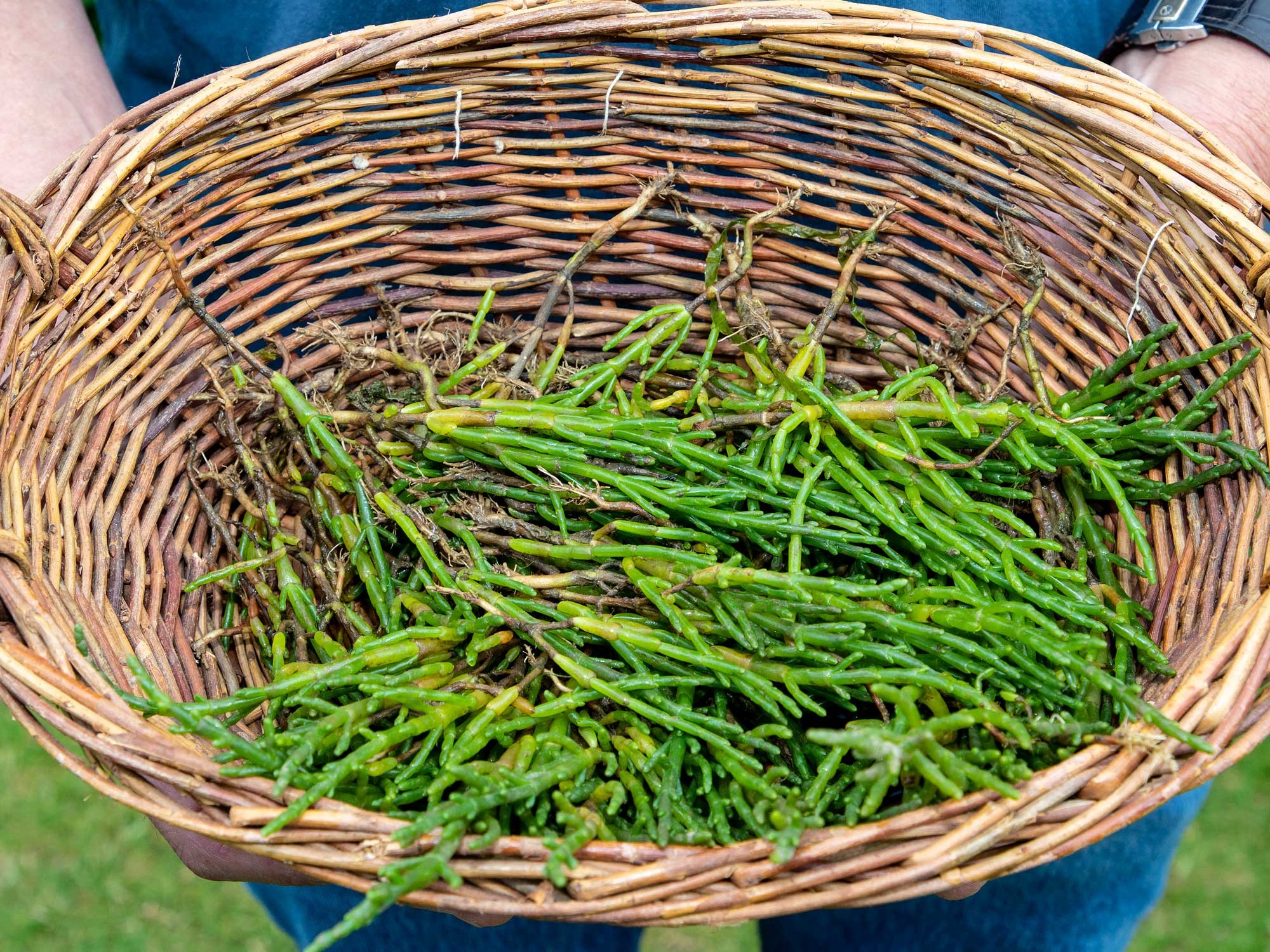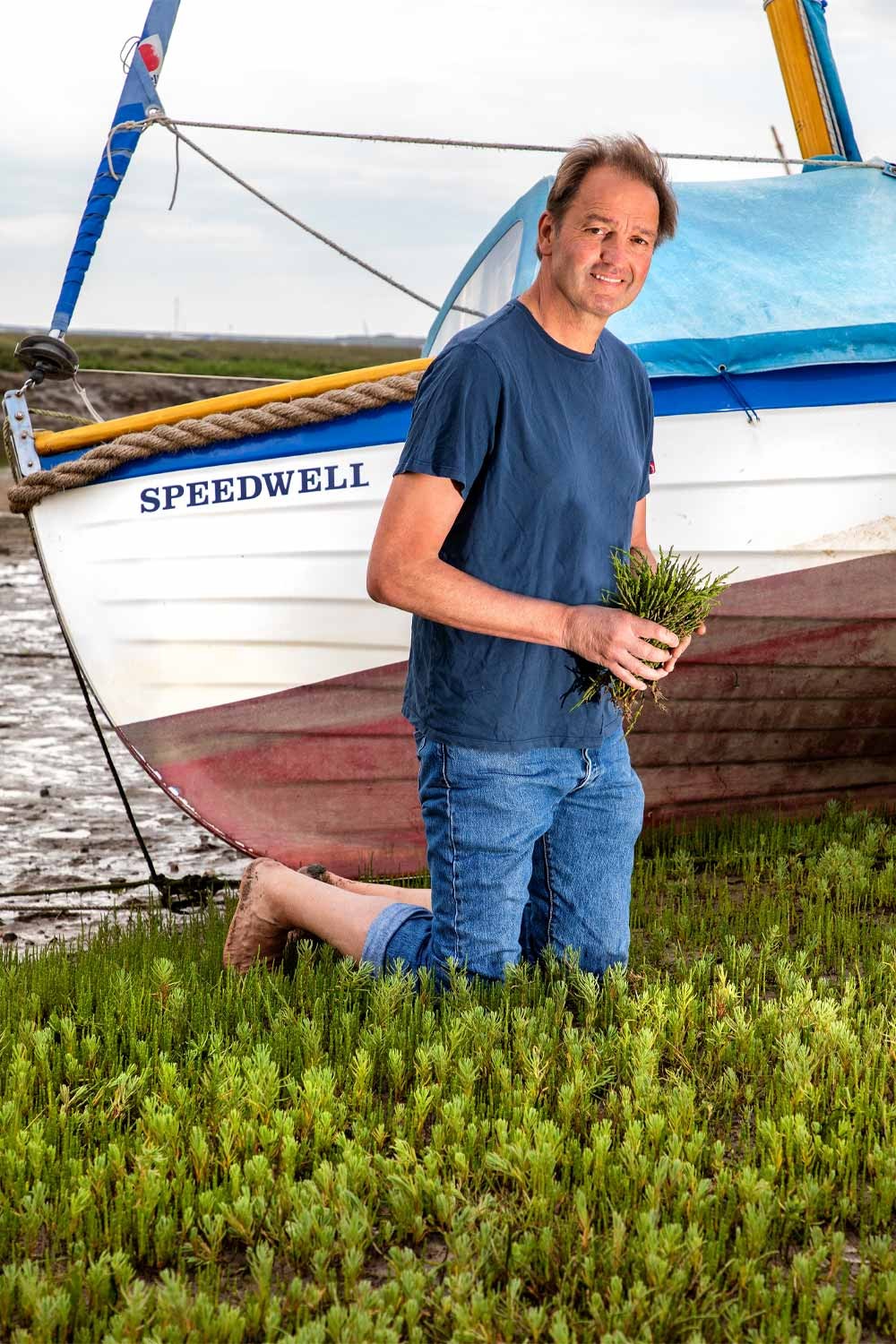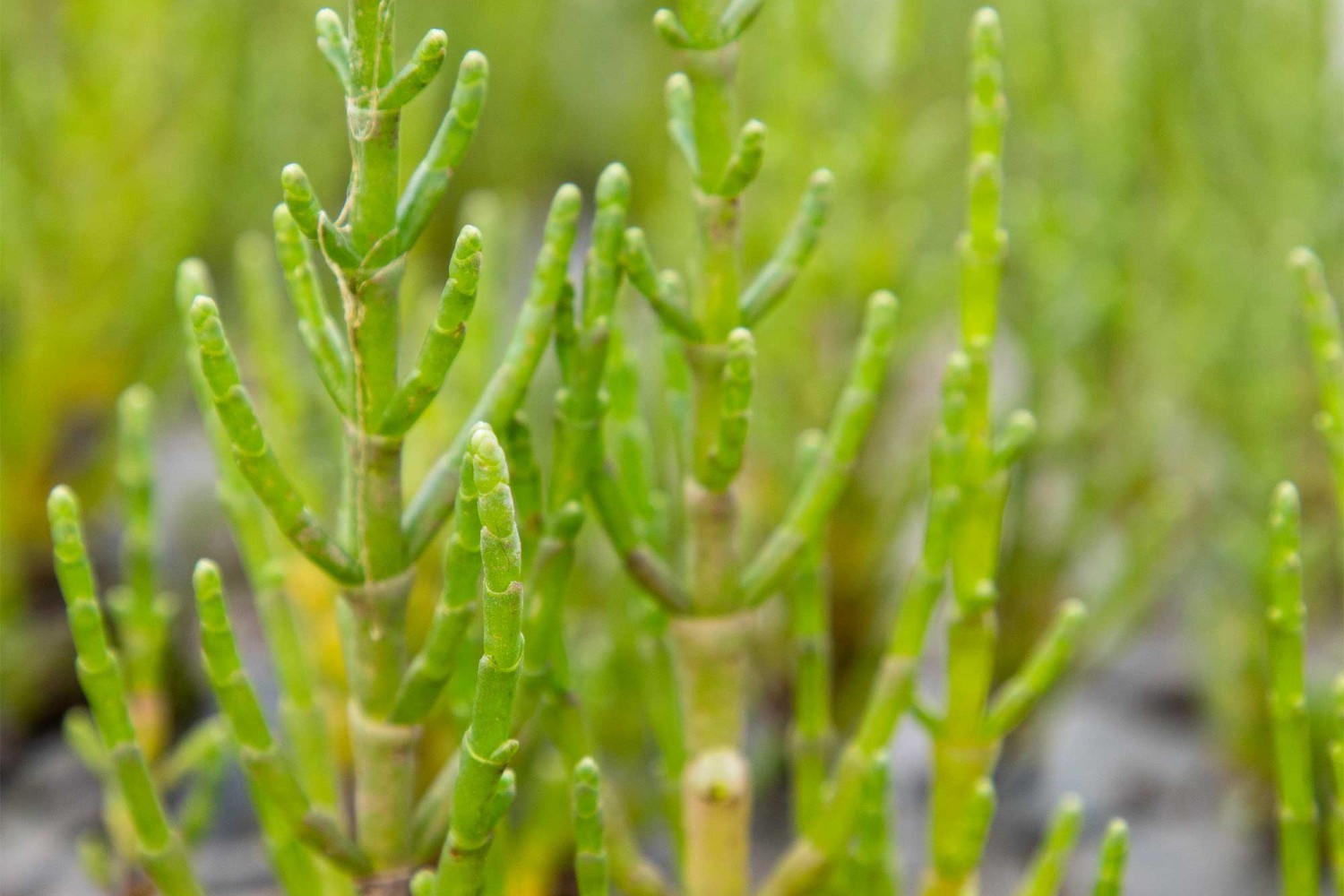
On the trail of a truly natural Norfolk delicacy
KL magazine talks to chef Galton Blackiston about how to pick, how to cook, and how to enjoy the taste sensation that’s found in abundance on the marshes and mudflats of north Norfolk over summer...
Samphire is a wild edible plant that locals on the north Norfolk coast have been foraging and enjoying for centuries. While botanists might refer to it as salicornia europaea it’s popular name derives from ‘sampiere’ – a corruption of the French Saint Pierre (Saint Peter), the patron saint of fishermen.
Long after it was mentioned in Shakespeare’s King Lear it’s become a delicacy that can be enjoyed in top restaurants over the country, including the perfectly located Morston Hall on the north Norfolk coast, which is owned by Michelin star chef Galton Blackiston. We caught up with Galton to find out more about the salty vegetable sensation!
KL magazine: Let’s get this out of the way first – what’s the correct way to pronounce ‘samphire’?
Galton Blackiston: It’s ‘sam-fer’, and definitely not ‘sam-fire’ – so many people get it wrong!
KL magazine: Why is the north Norfolk coastline such a good place for finding samphire
Galton Blackiston: Samphire grows on salt marshes and mudflats. It grows wherever it’s tidal. The environment on the north Norfolk coast is perfect for samphire, which is why we have it in abundance and why we’re so well known for it.
KL magazine: When can we expect to see samphire?
Galton Blackiston: It’s all down to weather conditions, but usually it will appear towards the end of June or early July and it will be around until the end of August. At the beginning of the season samphire is very tender, but if you leave it a month or so the central stem becomes quite woody, so it’s best at the beginning of the summer. You can still enjoy it later in the summer - but you might just have to cut it down more.
KL magazine: How do you pick samphire?
Galton Blackiston: That’s actually quite a contentious issue. I was brought up to pull samphire from the ground by the root. If you visit any of the little stall holders along the north Norfolk coast with samphire for sale, they’ll all tell you it’s picked up by the root. I talked about this once on television with James Martin on his Saturday Kitchen television show and I received complaints about why I was advocating samphire being picked by the root – because lots of people believed it should be cut! However, I’ll always pick samphire up by the root, and so will Norfolk locals!
KL magazine: Is there a skill to picking samphire?
Galton Blackiston: Not at all. It’s very easy to pull it from the root, and you can pick bunches and bunches of it. All you have to remember is to wash it thoroughly after it’s been picked, because it is likely to be muddy.
KL magazine: How long does samphire last once it’s been picked?
Galton Blackiston: I wouldn’t recommend keeping it more than 24 hours, because it will lose its flavour. It needs to be enjoyed fresh. It should be kept in the fridge between picking it and cooking it.
KL magazine: How do you cook samphire?
Galton Blackiston: Firstly cut it down and discard the root. When cooking, I believe the simplest way is best and as a general rule any vegetable (and samphire is classed as a sea vegetable) that grows above the ground should be plunged into simmering or boiling water, and any vegetable that grows under the ground should be brought up to the boil. I wouldn’t put salt in the water because samphire is already quite salty. It’s best to be cooked briefly for about a minute in boiling water. Then drain it and cover it with butter.
KL magazine: How do you think samphire is best served?
Galton Blackiston: During the summer we serve samphire at Morston Hall and it’s generally served with fish. It makes a lovely garnish. A few sprigs can also be added to a beurre blanc sauce. As the season goes on, a good way of preserving it is to pickle it. It goes really nicely with a ploughman’s lunch or a salad.
KL magazine: Are there any health benefits to eating samphire?
Galton Blackiston: It’s rich in vitamins and minerals and there’s lots of iron in there, so all round it’s a really good vegetable to eat.
KL magazine: How would you describe the flavour?
Galton Blackiston: It’s salty, and if it’s cooked correctly it has a nice crunch to it – and it has a lovely coastal flavour. It’s a seasonal gem.


